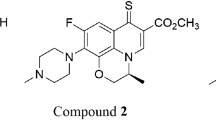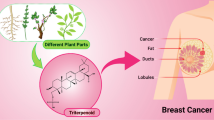Abstract
Herein, the synthesis, structure, binding affinity, cytotoxicity, and apoptotic properties of the new Zn(II) complex composed of folic acid and bipyridine ligands are reported. Because folic acid has the ability to target cancer cells directly, so it can play a role in targeted drug delivery of the complex and be useful to distinguish normal cells from cancerous. After characterization of Zinc complex utilizing FTIR, EA, and NMR, the results of MTT assay were shown that viability levels of two FR-positive cell lines (HeLa and Ovcar-3) are dependent on time and concentration of [Zn(bpy)FA], whereas, did not show a significant effect on FR-negative cell lines (A549). Also, Real-time PCR revealed that the presence of FA can influence the expression of apoptosis in cervical carcinoma HeLa cells while cisplatin alone doesn't have the ability to trigger apoptosis. Furthermore, the experimental results were evaluated using pharmacophore modeling and molecular docking analysis. Finally, the stability of the Zn(II) complex was surveyed using quantum mechanical studies.
Graphic abstract








Similar content being viewed by others
Data availability
All data and material are available from the corresponding author on reasonable request.
References
Grabner S, Modec B (2019) Zn(II) Curcuminate Complexes with 2,2’-bipyridine and Carboxylates. Molecules 24:2540. https://doi.org/10.3390/molecules24142540
Porchia M, Pellei M, Del Bello F, Santini C (2020) Zinc complexes with nitrogen donor ligands as anticancer agents. Molecules 25:5814. https://doi.org/10.3390/molecules25245814
Dianov E, Pervova I, Dvoskin E, Slepukhin P (2018) Synthesis and Structure of Zinc (II) Complexes with 2, 2’-Bipyridine. Russ J Gen Chem 88:843–845. https://doi.org/10.1134/S1070363218040357
Salimi M, Abdi K, Kandelous HM et al (2015) Antiproliferative effects of copper (II)–polypyridyl complexes in breast cancer cells through inducing apoptosis. Biometals 28:267–278. https://doi.org/10.1007/s10534-015-9820-5
Gao E, Sun N, Zhang S et al (2016) Synthesis, structures, molecular docking, cytotoxicity and bioimaging studies of two novel Zn (II) complexes. Eur J Med Chem 121:1–11. https://doi.org/10.1016/j.ejmech.2016.05.013
Omar M, Abd El-Halim HF, Khalil EA (2017) Synthesis, characterization, and biological and anticancer studies of mixed ligand complexes with Schiff base and 2, 2′-bipyridine. Appl Organomet Chem 31:e3724. https://doi.org/10.1002/aoc.3724
Puckett CA, Ernst RJ, Barton JK (2010) Exploring the cellular accumulation of metal complexes. Dalton Trans 39:1159–1170. https://doi.org/10.1039/b922209j
Abdolmaleki A, Shiri F, Ghasemi JB (2021) Use of Molecular Docking as a Decision-Making Tool in Drug Discovery. In.
Pirhadi S, Shiri F, Ghasemi JB (2013) Methods and applications of structure based pharmacophores in drug discovery. Curr Top Med Chem 13:1036–1047
He C, Heidari Majd M, Shiri F, Shahraki S (2021) Palladium and platinum complexes of folic acid as new drug delivery systems for treatment of breast cancer cells. J Mol Struct. https://doi.org/10.1016/j.molstruc.2020.129806
Shahraki S, Majd MH, Heydari A (2019) Novel tetradentate Schiff base zinc(II) complex as a potential antioxidant and cancer chemotherapeutic agent: Insights from the photophysical and computational approach. J Mol Struct 1177:536–544. https://doi.org/10.1016/j.molstruc.2018.10.005
Nandanwar SK, Borkar SB, Wijaya BN et al (2020) Synthesis and characterization of novel chelation-free Zn (II)-azole complexes: Evaluation of antibacterial, antioxidant, and DNA binding activity. Indian J Chem Sect A 59:589–597
Mansouri-Torshizi H, Eslami-Moghadam M, Divsalar A, Saboury A-A (2011) DNA-Binding Studies of Some Potential Antitumor 2, 2'-bipyridine Pt (II)/Pd (II) Complexes of piperidinedithiocarbamate. Their Synthesis, Spectroscopy and Cytotoxicity. Acta Chimica Slovenica 58
Mansouri-Torshizi H, Zareian-Jahromi S, Ghahghaei A et al (2018) Palladium(II) complexes of biorelevant ligands. Synthesis, structures, cytotoxicity and rich DNA/HSA interaction studies. J Biomol Struct Dyn 36:2787–2806. https://doi.org/10.1080/07391102.2017.1372309
Banti CN, Poyraz M, Sainis I et al (2020) The periodic table of urea derivative: small molecules of zinc(II) and nickel(II) of diverse antimicrobial and antiproliferative applications. Mol Diversity 24:31–43. https://doi.org/10.1007/s11030-018-09909-0
Sargazi A, Kamali N, Shiri F, Heidari Majd M (2018) Hyaluronic acid/polyethylene glycol nanoparticles for controlled delivery of mitoxantrone. Artif Cells Nanomed Biotechnol 46:500–509. https://doi.org/10.1080/21691401.2017.1324462
Heidari Majd M, Akbarzadeh A, Sargazi A (2017) Evaluation of host–guest system to enhance the tamoxifen efficiency. Artif Cells Nanomed Biotechnol 45:441–447. https://doi.org/10.3109/21691401.2016.1160916
Sargazi A, Barani A, Heidari Majd M (2020) Synthesis and apoptotic efficacy of biosynthesized silver nanoparticles using acacia luciana flower extract in MCF-7 breast cancer cells: activation of Bak1 and Bclx for cancer therapy. BioNanoScience 10:683–689. https://doi.org/10.1007/s12668-020-00753-x
Habibi Khorassani SM, Ghodsi F, Arezomandan H et al (2021) In Vitro apoptosis evaluation and kinetic modeling onto cyclodextrin-based host-guest magnetic nanoparticles containing methotrexate and tamoxifen. BioNanoScience. https://doi.org/10.1007/s12668-021-00877-8
Koes DR, Baumgartner MP, Camacho CJ (2013) Lessons learned in empirical scoring with smina from the CSAR 2011 benchmarking exercise. J Chem Inf Model 53:1893–1904. https://doi.org/10.1021/ci300604z
Shahraki S, Shiri F, Heidari Majd M, Dahmardeh S (2019) Anti-cancer study and whey protein complexation of new lanthanum(III) complex with the aim of achieving bioactive anticancer metal-based drugs. J Biomol Struct Dyn 37:2072–2085. https://doi.org/10.1080/07391102.2018.1476266
Check CE, Faust TO, Bailey JM et al (2001) Addition of polarization and diffuse functions to the LANL2DZ basis set for p-block elements. J Phys Chem A 105:8111–8116
Martínez-Rosell G, Giorgino T, De Fabritiis G (2017) PlayMolecule ProteinPrepare: A web application for protein preparation for molecular dynamics simulations. J Chem Inf Model 57:1511–1516
Schneidman-Duhovny D, Dror O, Inbar Y et al (2008) PharmaGist: a webserver for ligand-based pharmacophore detection. Nucleic Acids Res 36:W223–W228
Kowalczuk D, Pitucha M (2019) Application of FTIR Method for the Assessment of Immobilization of Active Substances in the Matrix of Biomedical Materials. Materials (Basel, Switzerland). https://doi.org/10.3390/ma12182972
Niven ML, Percy GC (1978) The infrared spectra (3500–140 cm− 1) of the 2, 2’-bipyridine, 2-aminomethylpyridine and ethylenediamine adducts and the sodium tris-compounds of cobalt (II), nickel (II) and zinc (II) acetylacetonates. Transition Met Chem 3:267–271. https://doi.org/10.1007/BF01393566
Hamed E, Attia MS, Bassiouny K (2009) Synthesis, spectroscopic and thermal characterization of copper(II) and iron(III) complexes of folic acid and their absorption efficiency in the blood. Bioinorg Chem Appl 2009:979680–979680. https://doi.org/10.1155/2009/979680
Sanadgol N, Wackerlig J (2020) Developments of smart drug-delivery systems based on magnetic molecularly imprinted polymers for targeted cancer therapy: a short review. Pharmaceutics. https://doi.org/10.3390/pharmaceutics12090831
Liang X, Fan J, Zhao Y et al (2017) A targeted drug delivery system based on folic acid-functionalized upconversion luminescent nanoparticles. J Biomater Appl 31:1247–1256. https://doi.org/10.1177/0885328217701289
Wang D, Lippard SJ (2005) Cellular processing of platinum anticancer drugs. Nat Rev Drug Discov 4:307–320. https://doi.org/10.1038/nrd1691
Florea A-M, Büsselberg D (2011) Cisplatin as an anti-tumor drug: cellular mechanisms of activity, drug resistance and induced side effects. Cancers 3:1351–1371. https://doi.org/10.3390/cancers3011351
Xavier MA, de Oliveira MT, Baranoski A, Mantovani MS (2018) Effects of folic acid on the antiproliferative efficiency of doxorubicin, camptothecin and methyl methanesulfonate in MCF-7 cells by mRNA endpoints. Saudi J Biol Sci 25:1568–1576
Popgeorgiev N, Sa JD, Jabbour L et al (2020) Ancient and conserved functional interplay between Bcl-2 family proteins in the mitochondrial pathway of apoptosis. Sci Adv 6:eabc4149. https://doi.org/10.1126/sciadv.abc4149
Villanova L, Careccia S, De Maria R, Fiori ME (2018) Micro-economics of apoptosis in cancer: ncRNAs modulation of BCL-2 family members. Int J Mol Sci. https://doi.org/10.3390/ijms19040958
García-Aranda M, Pérez-Ruiz E, Redondo M (2018) Bcl-2 Inhibition to Overcome Resistance to Chemo- and Immunotherapy. Int J Mol Sci. https://doi.org/10.3390/ijms19123950
Williams MM, Lee L, Hicks DJ et al (2017) Key survival factor, Mcl-1, correlates with sensitivity to combined Bcl-2/Bcl-xL blockade. Mol Cancer Res 15:259–268. https://doi.org/10.1158/1541-7786.MCR-16-0280-T
Williams MM, Lee L, Werfel T et al (2018) Intrinsic apoptotic pathway activation increases response to anti-estrogens in luminal breast cancers. Cell Death Dis 9:21. https://doi.org/10.1038/s41419-017-0072-x
Salakou S, Kardamakis D, Tsamandas AC et al (2007) Increased Bax/Bcl-2 ratio up-regulates caspase-3 and increases apoptosis in the thymus of patients with myasthenia gravis. vivo (Athens, Greece) 21:123–132
Barani M, Nematollahi MH, Zaboli M et al (2019) In silico and in vitro study of magnetic niosomes for gene delivery: The effect of ergosterol and cholesterol. Mater Sci Eng C Mater Biol Appl 94:234–246. https://doi.org/10.1016/j.msec.2018.09.026
Reed AE, Curtiss LA, Weinhold F (1988) Intermolecular interactions from a natural bond orbital, donor-acceptor viewpoint. Chem Rev 88:899–926. https://doi.org/10.1021/cr00088a005
Glendening ED, Landis CR, Weinhold F (2021) Complementary Bonding Analysis. In: 6 Natural bond orbital theory: Discovering chemistry with NBO7. Simon G (ed.) De Gruyter, pp. 129–156
Acknowledgements
The authors thank the Deputy of Research and Technology of Zabol University of Medical Sciences for all support provided.
Author information
Authors and Affiliations
Contributions
Chuanrong Yu has contributed to writing, laboratory works, and editing. Mostafa Heidari Majd designed the study and supervised the experiments. Fereshteh Shiri made contributions in conceptualization, visualization, and software. Somaye Shahraki assisted in experimental works, methodology, and validation. Pouya Karimi made contributions in mechanical study. All these authors have substantial contributions to the final manuscript and approved this submission. All authors are aware of the order of authorship and that no further change in authorship will be performed after submission, excepting those previously authorized by the editor-in-chief.
Corresponding author
Ethics declarations
Conflict of interest
The authors declare that they have no conflict of interest.
Ethical statements
This study was approved by the ethical committee of Zabol University of Medical Sciences (IR.ZBMU.REC.1398.209). There is no duplicate publication, fraud, plagiarism, or concerns about animal or human experimentation.
Additional information
Publisher's Note
Springer Nature remains neutral with regard to jurisdictional claims in published maps and institutional affiliations.
Rights and permissions
About this article
Cite this article
Yu, C., Heidari Majd, M., Shiri, F. et al. The role of folic acid in inducing of apoptosis by zinc(II) complex in ovary and cervix cancer cells. Mol Divers 26, 1545–1555 (2022). https://doi.org/10.1007/s11030-021-10293-5
Received:
Accepted:
Published:
Issue Date:
DOI: https://doi.org/10.1007/s11030-021-10293-5




